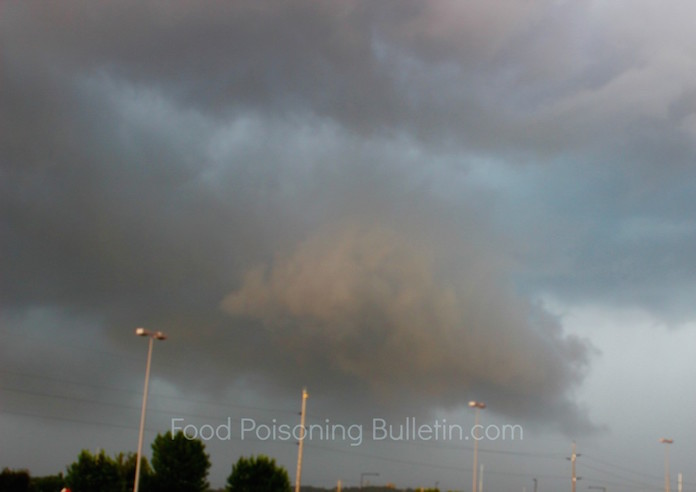The USDA is offering food safety recommendations for people who are in the path of Hurricane Matthew. This storm will hit the eastern coast of Florida the evening of October 6, 2016 and will move up the east coast over the weekend. Forecasters expect heavy rain and significant flooding. Power outages and flooding can compromise the safety of food that is stored in your home.

Take steps now to keep your food safe. Keep appliance thermometers in your refrigerator and freezer in case the power goes out. Safe temperatures are 40°F or lower in the fridge, and 0°F or lower in the freezer. Freeze water in one quart plastic storage bags or containers before the storm. These can be put into your fridge and freezer to help keep food cold. Know where you can get dry ice or block ice, and have coolers on hand if the power is out for more than four hours.
Freeze refrigerated foods that you won’t use immediately. You can freeze leftovers, milk, meat, and poultry. This will help keep these foods at a safe temperature for a longer period of time.
Grouping foods together in the freezer creates an ‘igloo’ effect that helps the food stay cold longer. A full freezer will keep foods cold longer as long as the door stays closed.
If the power does go out, keep the fridge and freezer doors closed as much as you can. A fridge will keep food cold for only four hours if the door is closed. A full freezer will keep food cold for 48 hours if full, 24 hours if only half full. Put frozen meats on one side of the freezer or on a tray so if it does thaw the juices don’t contaminate other foods.
Keep a few days’ worth of ready to eat foods on hand that do not need cooking or refrigeration. Dried fruits, peanut butter, bread, crackers, canned fish, canned vegetables, granola bars, breakfast cereals, nuts, and jerky should be considered.
After the storm is over, check the temp inside the freezer and fridge. Discard any meat, poultry, seafood, eggs, or leftovers that have been above 40°F for more than two hours. Throw out any food that feels warm to the touch or has an unusual odor or color. For a list of perishable foods that should be discarded if they are out of refrigeration for more than two hours, visit the USDA web site.
If frozen food still has ice crystals, it can be safely refrozen. Never taste a food to see if it’s safe to eat. When in doubt, throw it out.
If your home was flooded, never eat any food, even if it was in a sealed container, that was in contact with flood water. That includes raw fruits and vegetables, cartons of milk, or eggs.
Most containers are not waterproof and should be thrown away if it is touched by floor water. Those containers that are not safe are those with screw caps, snap lids, pull tops, and crimped caps. Discard cardboard juice, milk, and baby formula boxes and home canned foods. Flood water can get into those packages and contaminate the food.
Commercially canned foods should be safe to eat as long as the can wasn’t damaged. Damaged cans will swell or leak, and will have punctures, holes, fractures, deep rusting, or crushing and denting.
For more information, see A Consumer’s Guide to Food Safety During Severe Stores & Hurricanes. Also take a look at Food Safety During Power Outages, a video on YouTube.




